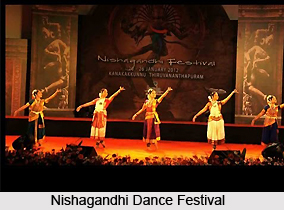 Nishagandhi Dance Festival, popularly renowned as the Nishagandhi Nritya Utsav is one of the exquisite dance festivals of India. India is a land of several colourful festivals encompassing every sphere of life. The festivals represent multiculturalism of the country and showcase an assortment of brilliancy. As among the prominent dance festivals of the southern part of India, Nishagandhi Nritya Utsav has achieved recognition of being a prestigious and culturally rich occasion. The dance festival witnesses the assembling of various famous and celebrated artistes from all over the country. The programme includes a variety of performances including ballet, folk and contemporary styles. Their participation brings the event to the foreground and makes possible the promotion of the cultural heritage of the distinct regions.
Nishagandhi Dance Festival, popularly renowned as the Nishagandhi Nritya Utsav is one of the exquisite dance festivals of India. India is a land of several colourful festivals encompassing every sphere of life. The festivals represent multiculturalism of the country and showcase an assortment of brilliancy. As among the prominent dance festivals of the southern part of India, Nishagandhi Nritya Utsav has achieved recognition of being a prestigious and culturally rich occasion. The dance festival witnesses the assembling of various famous and celebrated artistes from all over the country. The programme includes a variety of performances including ballet, folk and contemporary styles. Their participation brings the event to the foreground and makes possible the promotion of the cultural heritage of the distinct regions.
Nishagandhi Dance Festival is the convention of several artistes and connoisseurs from all over India. The festival is organised by the Kerala Tourism Development Corporation in the city of Thiruvananthapuram in South India. It is organised in the Nishagandhi open-air theatre, in Kanakunnu palace compound every year. The festival, thus, showcases the accomplishment of various performers and provides a fascinating glimpse of the flamboyant dance heritage of the country.
This dance festival is graced by various leading exponents of the Indian Classical dance, Bharatanatyam, Mohiniyattam, Kathak, Odissi and Manipuri. The celebrated artistes, thus, make the Nishagandhi Dance Festival a cultural treat. The festival also showcases different traditional handicrafts of Kerala alongwith the cuisines of India. The exhibitions are organised in the adjacent Sooryakanthi Fair Ground within the Kanakunnu palace grounds. This open air event invites the audience to a vocal, instrumental or fusion music.
Nishagandhi Dance Festival has become the integral part of the people of Thiruvananthapuram. The festival underlines the performance of the noted exponents such as Rajendra Gangani from the Jaipur School of Kathak dance, Geetha Chandran, a leading Bharatnatyam dancer and Guru Singhajit Singh, Manipuri dancer. Ghazal singer Talat Aziz, Mohiniyattom dancer Vinitha Nedungadi and Chhau dancer Shashadhar Acharya have staged their matchless performances. Karaikudi Mani (Mridangam), V. Suresh (Ghatam), B.V. Balasai (flute), B.V. Raghavendra Rao (electric violin), U.P. Raju (mandolin) and V.B. Madhusudhanan (tabla) are the maestros of fusion music and have enthralled the audience in the dance festival.



















